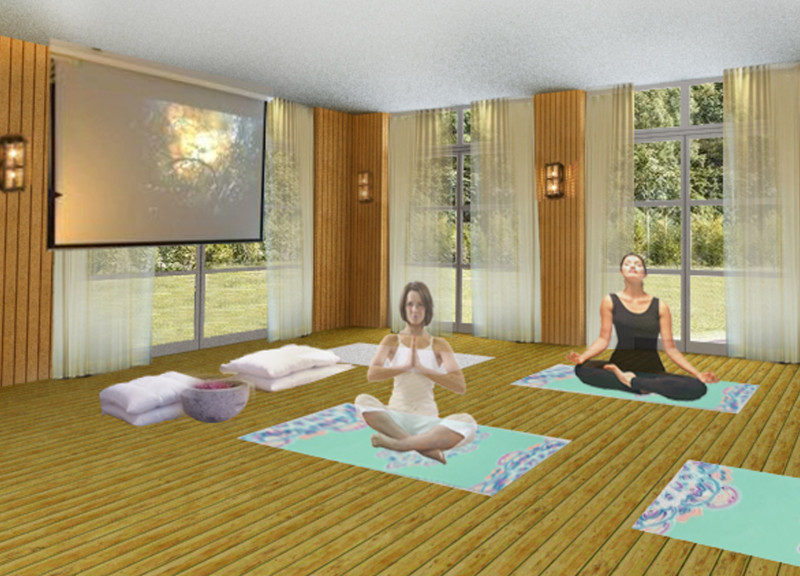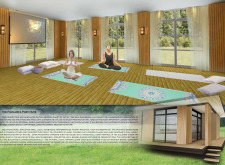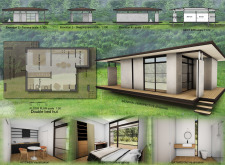5 key facts about this project
The design of the Poet Huts prioritizes ecological sustainability and user experience. Key materials include concrete for structural elements, wood for warmth and integration with the landscape, and glass for ample natural light. These choices enhance thermal efficiency and reduce environmental impact, essential for a project situated in a natural setting.
Social interaction is a fundamental aspect of the huts’ design. Common areas, including multipurpose gathering spaces and shared kitchens, encourage community engagement. Each hut is strategically positioned to ensure privacy while maintaining sightlines to the surrounding environment.
Unique Design Approaches and Materials
Pavilosta Poet Huts differentiate themselves through their biophilic design. The use of large glass panels connects occupants to the natural surroundings, allowing for uninterrupted views of the landscape and ensuring that indoor spaces feel expansive and airy. The project also integrates solar panels for energy generation, facilitating a self-sufficient energy model that mitigates reliance on non-renewable resources.
The architectural form of the huts, with their sloping roofs and terraces, maximizes natural ventilation and sunlight exposure. This attention to climatic considerations not only enhances occupant comfort but also reinforces a commitment to environmentally responsible design practices.
Functionality and Community Integration
The architectural layout emphasizes multifunctionality. Each hut is designed with both private and communal spaces, accommodating a range of activities from personal reflection to group gatherings. The combination of sleeping quarters, dining areas, and common spaces promotes a sense of togetherness essential for fostering community ties.
Terraces extend the living space outdoors, providing areas for relaxation and interaction while promoting an appreciation of the natural environment. This thoughtful integration of the interior and exterior spaces enhances the overall experience of users and supports the wellness objectives of the project.
For those interested in exploring the Pavilosta Poet Huts further, reviewing the architectural plans, sections, and designs can provide deeper insights into this well-conceived project. Understanding the balance of functionality and environmental consciousness presented in this architecture can inspire further discussions on sustainable building practices and community integration.


























